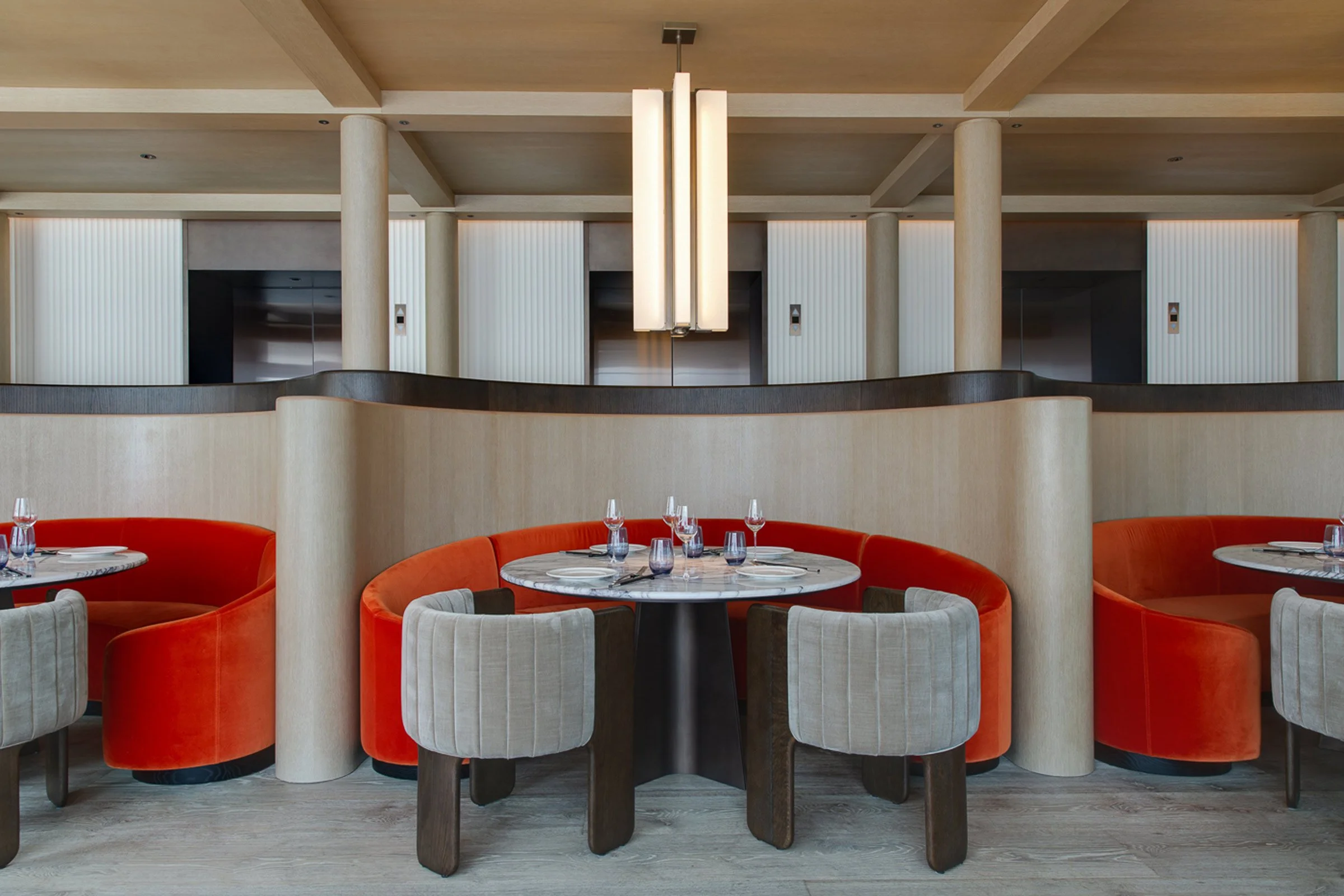Martin Brudnizki-designed Fortnum & Mason Opens in Hong Kong

Located in K11 MUSEA, the brand’s first store outside of London was designed by Martin Brudnizki Design Studio and marks the firm’s first project in Asia. The space, which also houses F&M’s 181 restaurant, is inspired by the Georgian architecture of the original Piccadilly store, with a touch of whimsy and old-world charm. We spoke with Martin Brudnizki to find out more about the landmark project
Design Anthology: This is your first project in Asia, but is it also your first project with Fortnum & Mason?
Martin Brudnizki: We’ve actually worked with Fortnum & Mason before, back in London for the original Piccadilly store. We reworked the iconic Fountain Restaurant and transformed it into 45 Jermyn St., a beautiful restaurant that’s accessed through its own entrance, making it a destination restaurant in its own right. In designing it, we fused together the heritage of the iconic department store and the glamour of contemporary London.
What’s unique about the Hong Kong store’s location?
K11 MUSEA is an ultra-modern development on the edge of Victoria Harbour. The horseshoe-shaped store proved a challenge when deciding how best to optimise the shop floor and restaurant, so we spent a lot of time working out how to ensure the space would flow and welcome patrons in. By creating two entranceways on either side of the building we optimised footfall and by placing the staircase — which leads up to the restaurant — at a strategic angle, we were able to centralise the floor plan. We also managed to open up the space by placing display tables strategically and integrating cabinetry.
What was the project brief?
Our studio was tasked with translating the iconic grocer’s brand into a tangible store and restaurant for a new, international audience. We were asked to design the shop floor and 181 restaurant, which serves lunch, afternoon tea and dinner. We wanted to make sure the design language flowed seamlessly throughout, so while the shop floor has a different look to the restaurant, they sit in harmony thanks to a similar colour palette and added sense of fun and whimsy.
What design references or narrative did you try to incorporate into the space?
We spent a lot of time researching Fortnum & Mason’s unique history, including visiting the archives in the London Store. We immersed ourselves in the shop’s design history, from Edward Bawden’s original illustrations to the iconic red woollen carpet. Having established this background, we looked at how we could take this heritage and transplant it in a contemporary and fitting way in Hong Kong, at the same time introducing some Asian influences — though we were very clear about not creating a space that would feel like a pastiche. On a simple level, our design narrative brings together the heritage and grandeur of Fortnum & Mason Piccadilly with the subtle inflection of Asian art, culture and heritage, all the while ensuring a sense of frivolity so that the new store appeals to the modern-day shopper.
Please tell us a little about the material choices for the space.
We’ve used very traditional materials, including oak timber, brass, ceramic, marble and wool, and combined them with contemporary touches like our ‘functional follies’, bold artwork and a bespoke wall mural by artist Melissa White, which depicts a traditional Asian garden scene, to ensure the store and restaurant are in harmony with this ultra-modern city.
Please tell us about some of the custom pieces for the space.
We introduced many antique elements to the design, which was a fun aspect of designing the store. However, we also custom designed all the shelving and functional follies that are dotted throughout the space. The champagne display was inspired by a classic silver champagne bucket and the dancing elephant at the top of the display is a reference to the branding on Fortnum & Mason’s house sparkling wine. The biscuit display features a bespoke table whose legs are carved egret birds, a subtle nod to the store’s Asian location, whilst the grandiose tea counter is complete with elegant filigrees and areas where shoppers can smell, taste and touch the different teas.
Lastly, what were your impressions of the city?
For such a modern and developing city, it’s amazing to see the stark contrast between urban living and the beauty of the surrounding landscape. I loved how the mountains rub shoulders with busy highways and the way the sea interacts with the slick, sharp architecture. There’s something very grounding about the reliable motion of the waves contrasting with the heartbeat of the city.
As told to / Suzy Annetta
Images / James McDonald

















